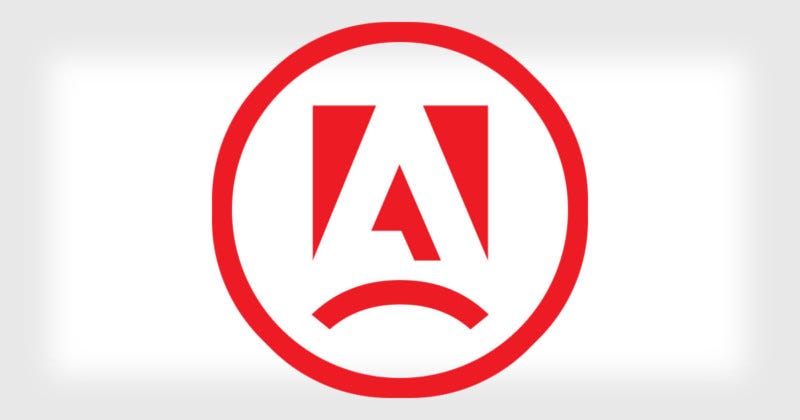# Embracing Alternatives to Adobe: A Journey Begins
Written on
Chapter 1: A Shift Away from Adobe
I'm making the decision to move away from Adobe, and I believe many of you might want to join me on this journey. The question is: how can one transition from Adobe to alternative solutions?

My fascination with technology began when kinetic typography lyric videos gained popularity. A dedicated Green Day fan frequently shared these videos on YouTube, utilizing software like Sony Vegas Pro and Adobe After Effects.
Fast forward to today, and Sony no longer owns Vegas Pro; it’s simply known as Vegas Pro. Back then, the full version was available for $299.99, a steep price for a high school student like me. Now, Vegas Pro offers three subscription plans: video editing, video and audio, and post-production. The segmentation is puzzling, and it’s disheartening that we can never truly "own" the software.
In a world increasingly dominated by subscription services, this has become the norm. The launch of Adobe Creative Cloud in 2013 marked a significant shift for the company. It introduced cloud-based projects and eliminated the possibility of purchasing their software outright.
As a student, I benefit from the entire Adobe Creative Cloud for $20 a month. While it grants me access to essential tools like Photoshop, Premiere Pro, Audition, After Effects, Illustrator, and XD, this arrangement may not last forever.
This model has worked well for Adobe. Before 2013, many, including myself, resorted to pirating their software, a practice that seems to have diminished since the introduction of subscriptions. However, at $800 for Adobe Premiere Pro, its cost was prohibitive compared to alternatives like Final Cut.
Adobe is widely regarded as the industry standard for creative software. Yet, I’ve realized I’ve spent too much on their products, and that trend is about to change.
Let’s take a moment to recognize the ubiquity of subscription models; it’s frustrating. Even the pro-level editing software I learned on, AVID Media Composer, comes with a hefty price tag. Unless you’re a student or part of an educational institution, there's no way to buy a perpetual license.
Adobe, AVID, Vegas Pro, and many others have adopted subscription models—so who hasn’t?
Interestingly, Apple stands apart.
While Apple doesn’t offer the same suite of programs as Adobe, it’s crucial to consider this when comparing prices. If your focus is solely on Premiere Pro and After Effects, there's little reason to stick with them unless you're using a PC.
Final Cut Pro is available on the Mac App Store for $299.99, equivalent to 15 months of Adobe Premiere Pro's subscription. Final Cut Pro includes Apple’s Motion software, which offers similar functionalities to what you would receive by subscribing to both Premiere Pro and After Effects separately.
Logic Pro is available for a one-time fee of $199.99, representing 10 months of Adobe Audition, which some users might prefer over Audition itself.
When it comes to student pricing, Adobe's offering pales in comparison to Apple’s. For $20 a month, students can access the entire Adobe suite. Sounds great, right? Well, it may not be if your work doesn’t heavily rely on graphic design tools that Apple lacks.
For $199.99, Apple provides students with a lifetime license to five applications: Final Cut Pro/Motion, Logic Pro/Compressor, and MainStage. This licensing is valid for unlimited devices for individuals, as opposed to Adobe's restriction of two devices, and it never expires.
The total cost for the full Adobe suite exceeds $50 per month, which can’t compete with Apple’s pricing.
After considerable reflection, I've concluded that there are indeed numerous applications that can assist users in moving away from Adobe. In the upcoming weeks, I plan to explore these alternatives.
One of my main grievances with Adobe is its monopolistic tendencies. This issue didn't start with the acquisition of Figma; it began with the purchase of Photoshop in 1995, followed by Macromedia in 2005, Omniture in 2009, EchoSign in 2011 for Acrobat's signature service, TypeKit in 2011, and Behance in 2012. The trend continued with the acquisition of Aviary in 2014, Mixamo in 2015, and Livefyre in 2016, which were later shelved. It seems Adobe's strategy heavily relies on buying out its competition.
Transitioning away from Adobe will undoubtedly present challenges, but I intend to start with my primary focus: graphic design.
I’ve heard positive reviews about Affinity’s suite, which includes programs that can substitute for Photoshop, Lightroom, Illustrator, and InDesign. The best part? Each program is priced at just $54.99. While that may seem high, it's a one-time purchase.
Adobe’s photo suite costs $10 monthly for access to Photoshop and Lightroom. In contrast, Affinity’s design software offers a better deal, as it is comparable to Adobe Illustrator's $20 monthly subscription. After three months, Affinity Designer effectively pays for itself.
Chapter 2: Exploring Alternatives
The first video title is "Leaving Adobe (a long time coming)" - This video discusses the reasons behind moving away from Adobe products and explores various alternatives available in the market.
The second video title is "Is It Time to Ditch Adobe?" - This video examines the implications of Adobe's subscription model and the potential benefits of exploring other options.